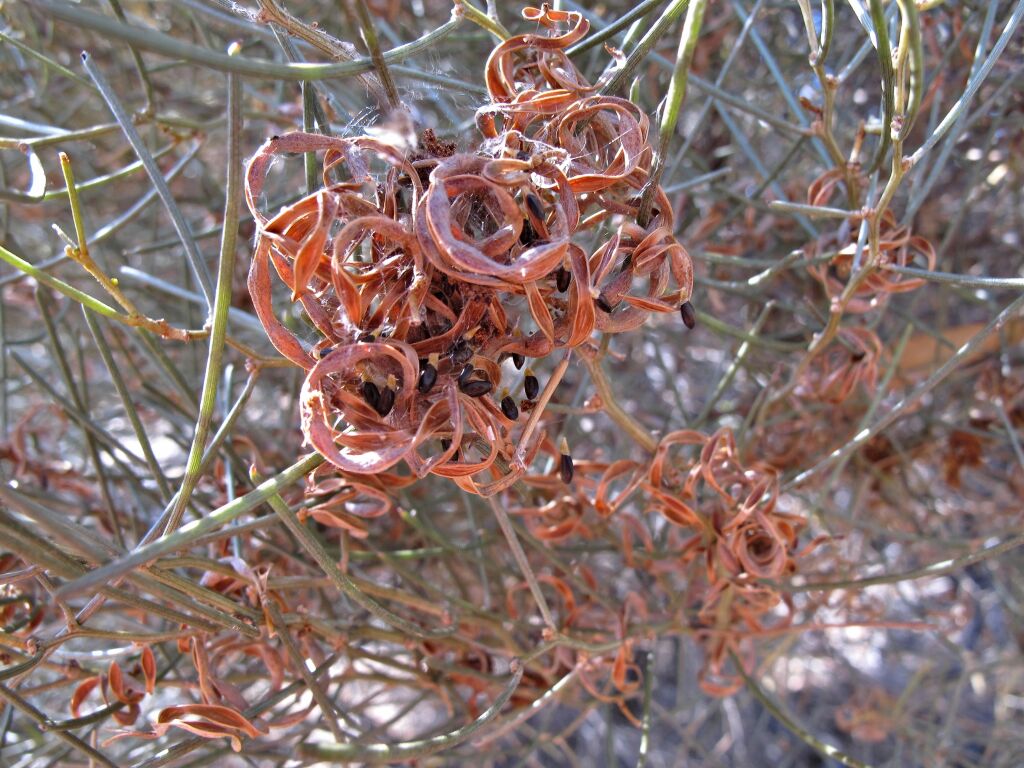Acacia rigens
A.Cunn. ex G.Don NealieSpreading shrub or tree, to 6 m high; branchlets strongly yellow-ribbed, with appressed, minute hairs between glabrous ribs. Phyllodes terete to linear-compressed, 3–14 cm long, 0.8–1 mm diam. (subterete variant) to 2.5 mm wide (compressed variant), straight to shallowly curved, rigid, with appressed, minute hairs, sometimes glabrous between veins, apex sharply to coarsely pungent and often curved; veins numerous, closely parallel, raised, yellowish; gland basal. Peduncles 2–6 mm long, 2 per node, with appressed, minute hairs; heads globular, 4–8 mm diam., 20–33-flowered, golden, sometimes resinous; bracteoles spathulate. Flowers 5-merous; sepals free to half united. Pods linear, raised over and constricted between seeds, 3.5–10 cm long, 2–3 mm wide, chartaceous to coriaceous, straight to slightly curved, sometimes with appressed, minute hairs; seeds longitudinal, oblong-elliptic to narrowly elliptic, 3–4.5 mm long, glossy, pale brown, aril apical, conical. Flowers Aug.–Nov.
LoM, MuM, Wim, VRiv, MSB, RobP, MuF, GipP, Gold, CVU, GGr. Also WA, SA, Qld, NSW. In north-west Victoria extending south to Mt Arapiles and east to Rochester. Commonly grows in sandy soils but also on red and shaley soils, mostly in mallee scrub. A single collection was purportedly from the You Yangs.
Similar to A. havilandiorum and A. cineramis. From the former it differs in the ribbed branchlets that are minutely pubescent between the ribs, similar-appearing phyllodes but with more prominently raised veins and minutely pubescent intervein spaces, a basal gland, minutely pubescent peduncles, spathulate bracteoles and regularly 5-merous flowers. A specimen from the Little Desert is entirely glabrous and has a gland 1.5–2.5 mm above the pulvinus, but otherwise matches A. rigens rather than A. havilandiorum. Acacia cineramis primarily differs from both these species in the branchlets that are more or less completely covered in fine whitish hair.
Entwisle, T.J.; Maslin, B.R.; Cowan, R.S.; Court, A.B. (1996). Mimosaceae. In: Walsh, N.G.; Entwisle, T.J., Flora of Victoria Vol. 3, Dicotyledons Winteraceae to Myrtaceae, pp. 585–658. Inkata Press, Melbourne.
 Spinning
Spinning



